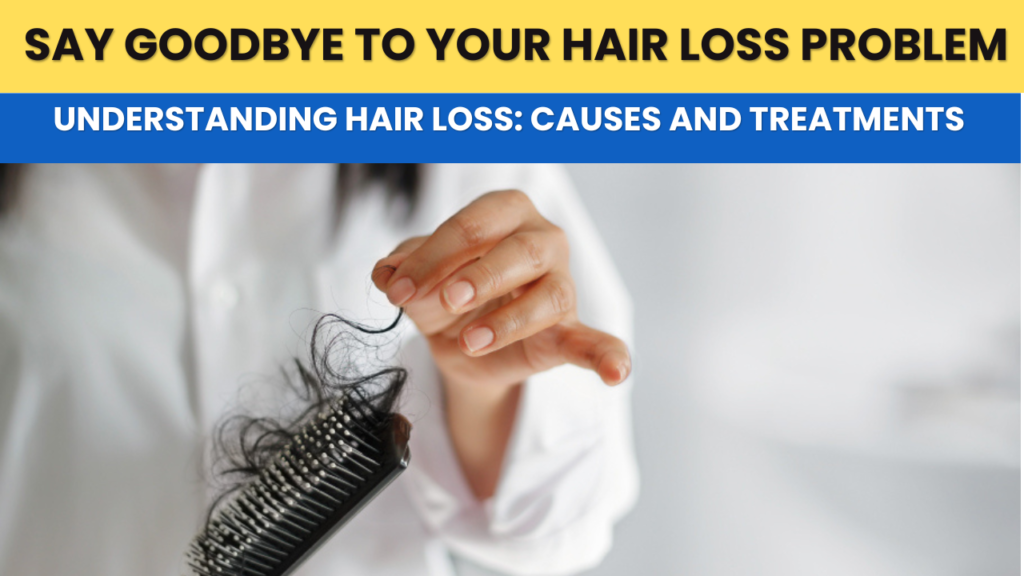Best Hair Treatment In Muzaffarpur
Say goodbye to your hair loss problem with the help of modern treatment methods at Dr.Haque Dental & Health Centre. We provide quality hair treatment that reduces hair problems and promotes hair growth and health.
Hair loss is a widespread condition affecting millions of people globally. According to the American Academy of Dermatology, approximately 80 million men and women in the United States alone experience some form of hair loss. This statistic underscores the prevalence of this condition, making it a significant concern for many individuals. Hair loss can manifest in various forms, ranging from mild thinning to complete baldness, and can be either temporary or permanent
The impact of hair loss extends beyond the physical appearance, often affecting the psychological and emotional well-being of those who experience it. Many individuals report experiencing a loss of self-confidence, increased anxiety, and even depression as a result of their changing appearance. The societal emphasis on hair as a symbol of beauty and vitality further exacerbates these emotional effects, making hair loss a deeply personal and challenging issue for many.
Understanding the causes of hair loss is crucial in addressing this condition effectively. Hair loss can result from a variety of factors, including genetics, hormonal changes, medical conditions, medications, and lifestyle choices. Temporary hair loss is often linked to stress, nutritional deficiencies, or medical treatments such as chemotherapy. In contrast, permanent hair loss is typically associated with genetic factors, such as androgenetic alopecia, commonly known as male or female pattern baldness.
This blog post aims to provide a comprehensive exploration of hair loss, delving into its various causes and examining the treatments available. By shedding light on this condition, we hope to offer valuable insights and potential solutions for those grappling with hair loss, helping them regain their confidence and quality of life.
Common Causes of Hair Loss
Various factors can contribute to hair loss, and understanding these causes is essential for effective treatment and prevention. One of the most common causes is genetic predisposition, particularly androgenetic alopecia, which affects both men and women. This condition, also known as male or female pattern baldness, is characterized by a gradual thinning of hair, starting at the temples and crown in men and a general thinning in women.
Hormonal changes are another significant factor in hair loss. These changes can occur during pregnancy, menopause, or due to thyroid issues. For instance, postpartum hair loss is common among new mothers, typically occurring a few months after childbirth. Menopause can also trigger hair thinning due to a decrease in estrogen levels. Thyroid imbalances, whether hyperthyroidism or hypothyroidism, can lead to hair shedding or thinning.
Medical conditions can also lead to hair loss. Alopecia areata, an autoimmune disorder, causes round patches of hair to fall out suddenly. Scalp infections, such as ringworm, can cause scaly patches and hair loss. Other skin disorders, like psoriasis or seborrheic dermatitis, can also damage hair follicles and lead to hair thinning.
Medications and treatments for various health conditions are known to cause hair loss as well. Chemotherapy drugs, used to treat cancer, are notorious for causing significant hair fall. Medications for arthritis, depression, heart problems, and high blood pressure can also have hair loss as a side effect. It is essential to discuss potential side effects with a healthcare provider when starting any new medication.
Physical or emotional stress can lead to a condition known as telogen effluvium, where a large number of hair follicles enter the resting phase simultaneously, resulting in noticeable shedding. This type of hair loss is usually temporary and resolves once the stressor is eliminated.
Lastly, lifestyle factors play a crucial role in hair health. A poor diet lacking essential nutrients, such as iron, protein, and vitamins, can weaken hair and cause it to fall out. Hair care practices, including excessive use of heat styling tools, chemical treatments, and tight hairstyles, can damage hair shafts and follicles. Smoking has also been linked to hair loss due to its negative impact on blood circulation and the delivery of oxygen to hair follicles.
Diagnosis and Evaluation of Hair Loss
The diagnosis and evaluation of hair loss are critical steps in understanding the underlying causes and determining the most effective treatment options. Healthcare providers employ a variety of methods and tests to diagnose hair loss accurately. A comprehensive medical history and physical examination are often the initial steps in this process. During the medical history intake, the healthcare provider will inquire about the patient’s family history of hair loss, any recent illnesses or surgeries, medications, and lifestyle factors that could contribute to hair loss.
A physical examination of the scalp follows, where the healthcare provider will look for patterns of hair loss, signs of scalp inflammation, and other physical clues that might indicate the cause. Blood tests are frequently ordered to uncover any underlying medical conditions that might be contributing to hair loss. These tests can detect issues such as thyroid disease, hormonal imbalances, or nutritional deficiencies, which are common culprits of hair loss.
In some cases, a scalp biopsy may be necessary. This involves taking a small sample of scalp tissue to examine the hair follicles under a microscope. The biopsy can provide valuable information about the health of the hair follicles and help differentiate between various types of hair loss, such as scarring and non-scarring alopecia. Another diagnostic tool is the pull test, where the healthcare provider gently tugs on a small section of hair to see how many hairs come out. This test helps determine the rate and severity of hair loss.
Dermatologists and trichologists play a significant role in diagnosing hair loss. Dermatologists are medical doctors who specialize in skin, hair, and nail conditions, while trichologists focus specifically on hair and scalp health. Their expertise is invaluable in identifying the root causes of hair loss and recommending appropriate treatment strategies. Early diagnosis is crucial in managing and treating hair loss effectively, as it allows for timely intervention and better outcomes.
Effective Treatments for Hair Loss
Hair loss can be a distressing experience, but a variety of effective treatments are available to address this condition. Over-the-counter treatments, such as minoxidil, have shown to be effective in stimulating hair growth for many individuals. Minoxidil, available as a topical solution or foam, is applied directly to the scalp and can help enhance hair follicle activity.
Prescription medications like finasteride are another popular option. Finasteride works by inhibiting the hormone responsible for hair loss, thus slowing down the process and promoting hair regrowth. It’s crucial to consult with a healthcare provider to ensure this medication is appropriate for your specific situation.
Other medical interventions include corticosteroid injections, which can be particularly beneficial for conditions like alopecia areata where the immune system attacks hair follicles. These injections help reduce inflammation and can stimulate hair regrowth in affected areas. For more severe cases, hair transplant surgery offers a long-term solution. This procedure involves transplanting hair follicles from a donor area to the thinning or balding regions of the scalp.
Non-medical interventions also play a significant role in managing hair loss. Laser therapy has emerged as a promising treatment, using low-level lasers to stimulate hair follicles and promote growth. Additionally, natural remedies and dietary changes can support overall hair health. Incorporating nutrients like biotin, zinc, and omega-3 fatty acids may improve hair strength and growth. Proper hair care routines, including gentle washing and avoiding excessive heat styling, can also help maintain hair health.
The importance of consulting with healthcare professionals cannot be overstated. A thorough evaluation can determine the underlying cause of hair loss and guide you toward the most appropriate treatment. Success stories and testimonials highlight the effectiveness of these treatments, providing hope and real-world examples of individuals who have experienced positive results.


